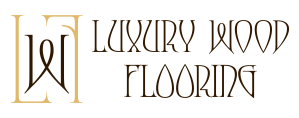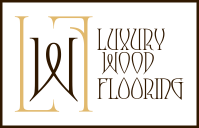Find below some of the most often asked questions and answers. If you can’t find the answer of your specific questions here please contact us either using the online form or send us an email on [email protected], alternatively you can give us a call in our office number Mon-Fri 9.00-17.30h. We will gladly answer all of your questions.
Wood Floor Installation
Yes, any kind of wood will change its colour over time. During this process light-coloured wood types are not necessarily going to get lighter, dark wood types however will get darker. Every wood type has a characteristic aging process of its own and will react in its individual way.
Despite our strict sorting criteria and thorough quality control there may be certain material-specific peculiarities that customers come across during the on-site selection and installation process which may need to be cut out. Generally, we recommend adding 7-10% to the room’s sq.m. in total for cutting scrap. Please note that the allowance for wastage may vary depending on the type and size of the chosen flooring, the layout of the area, as well as other specifics of the project.
When gluing a Real Wood to the subfloor an expansion gap of 15mm towards the walls is sufficient. With floating-floor installations for every metre of installation width the flooring requires a distance to the wall of at least 5mm, lengthwise an expansion gap of 15mm is sufficient.
Floating flooring is where the flooring is laid down over a layer of underlay. The individual planks are glued together, and they are not glued or nailed in to the permanent floor. By doing this the floor is “floating” above the underlay – this is the standard installation method for laminate flooring and is not recommended as the best method for solid wood floors.
The method used for your hardwood installation will depend upon the type of product you have chosen, where the flooring will be installed and the type of subfloor. Nail down, glue down & floating are the three type of installation. For instance, if you are remodelling your kitchen, some products can be “floated” over most sub-floors, including vinyl or ceramic tile, eliminating the mess and cost of tearing up the existing floor and installing a sub-floor.
Yes, although it can be slippery, so think about your own environment before deciding (ie. Young children, pets)
If the chosen engineered flooring is suitable to be installed as a floated floor, Yes it is possible to be installed over linoleum. Providing the linoleum remains tightly glued to the original sub floor.
Yes. With the variety of products available and a choice of installation options, hardwood flooring can now be installed in any room of the home. The only consideration is whether the floor will be installed on/above or below-grade. For example, because of potential moisture problems, solid hardwood is not recommended for installations below grade, such as in a basement. Engineered products, which are inherently dimensionally stable, are better choices for this area. All types of hardwood can be installed on/above-grade.
UNLOAD IN DRY WEATHER – If possible, unload flooring in good weather, never unload in the rain. Leave the flooring wrapped in the room you are installing it for 2 to 3 days to acclimatise.
Wood Floor Sanding and Finishing
Yes, it is quite noisy, particularly on the first day. When all machines are working you may want to go out for the day, or arrange for someone to look after young children.
All our machines are virtually dust free. The maximum dust discharge will be no more than 2 mg. per cubic meter.
Decorate first and carry out any plumbing, or electrical work prior to having your floor sanded is the optimal solution.
We can fill the gaps using clean fine sawdust from your floor, which we mix with a wood filler. If gaps are wider than 7mm we may use re-claimed splinters of wood to wedge into the gaps, then sand down to level.
A room that measures 20 sq. meters will take a day for sanding and finishing. Drying time of the finish itself depends of two things:
environment of the room – humidity, temperature etc. (in warm and ventilated room, the floor finish will dry faster)
and the type of the finish – Lacquer base finishes can get dry for 2-6 hours; Oil based finishes can take 24 hours to get dry. Try not to move furniture back in the room for 48 hours allowing the floor to cure properly.
Many properties have this black tar like substance around the edge. All is removed during the sanding process using a coarse grit abrasive.
Yes. Staining a floor a different colour is possible. After the floor has been sanded the floor can be stained in to a different colour. We use a number of water based stains and have a wide variety of shades to choose from.
A lacquered flooring will give a shiny reflective effect leaving the room feeling fresh and clean. Being lacquered makes it a harder wearing floor and a great way to make a room feel larger. An oiled flooring has an aged feel to it giving a room an authentic warm atmosphere. Great for areas that have high traffic volumes such as receptions. An oiled floor will require a maintenance coat to be applied every 16 – 24 months for residential or 4 – 6 month for floors with commercial use.
Wood flooring Maintenance
Use Wood-Floor Soap for regular maintenance cleaning. Use a vacuum cleaner for lacquer-finished floors and damp-wipe only if needed.
No – the pre-finished floor contains multiple layers of a UV-cured polyurethane. This gives the floor a tough, durable and smooth finish which is very easy to maintain. However you must never damp mop a solid wood floor – water and wood do not mix. There are a number of products now available which are specifically for wood floors.
To keep your floors as beautiful as the day they were installed or refinished, simply follow these easy steps and always use the manufacturers’ recommended cleaning product: Never use vinyl or tile floor care products on wood floors, they can cause the floor to become slippery and appear dull. Place mats and throw rugs at doorway exteriors and interiors to help prevent the tracking of grit and dirt on your wood flooring. Never wet-mop a wood floor. Standing water can stain or damage the wood. Wipe up food and other spills immediately with a slightly dampened towel. Place soft plastic or fabric faced glides under the legs of furniture to prevent scratching of your wood floor. When moving heavy furniture, completely pick it up rather than sliding it across the floor to best protect your wood flooring. Try not to let people walk on the wood floor with stiletto-healed shoes as these can cause damage. In the kitchen place a rug in front of the sink area. Use a humidifier in the winter months to keep the movement of wood to a minimum. Dust mop, sweep or vacuum your wood floor regularly. Clean with manufacturers recommended cleaner. Recoat the wood floor when cleaning no longer restores shine. The frequency of this will depend on the amount of traffic. Never place potted plants directly in contact with your flooring, even if they are placed in waterproof saucers. Condensation can develop under these saucers and damage your flooring. To avoid this, place your plants on trivets or stands, so that air can circulate underneath. Dog and cat nails can scratch and dent your floor’s surface. Keep nails trimmed regularly. Immediately clean up pet urine, as it will damage the floor’s finish if allowed to dry. No maintenance or cleaning products should be applied until 2 weeks after the wood floor has been lacquered or oiled. Do not use water to clean wood floors, always use a recommended cleaner.
Marquetry
Inlay is a method of decorating objects that dates back thousands of years. The earliest known example is a Mesopotamian limestone bowl with some shell pieces embedded in it, from around 3000 B.C. Basically, an inlay is a puzzle that the artist cuts all the pieces for, then routs (or grinds, chisels or gnaws) out a corresponding hole in the host material (usually wood, but possibly stone, metal, plastic, etc.), and glues in flush with the surface. After filling any residual pits and sanding smooth, the inlay might have some final details engraved on it, and the lines inked. Some people tend to confuse inlay with marquetry, which is a similar decorative technique that normally employs wood veneers, and is glued over the surface of the host object. Both methods are difficult to master, have their own specialized tools and jargon, and occupy specific niches in the decorative arts. Another craft similar to shell inlay is stone mosaic, again using its own unique equipment.
Solid Wood Flooring
An increase in demand for hard wood floors has seen prices slowly fall as more and more companies are realising their benefits. When looking at the lifespan of solid wood floors they are excellent value for money as they never have to be replaced and are easily re-finished to suit décor changes. Solid wood floors truly are “beauty that lasts a lifetime”.
Solid wood floors, just like ceramics are recognised as a high quality building material. They are long lasting and completely renewable with very little effort. Aside from these benefits solid wood floors are fashionable, minimalist and above all, desirable which means that they increase the value of your home.
Solid wood flooring as expected really, regardless of width or length, if it’s one piece of wood from top to bottom, it’s considered solid wood flooring. Solid wood flooring gives you a great opportunity for customisation. Your choice of specie, stain and finishes all contribute to the personalisation of a solid floor. This is an excellent choice in most areas of a home on the ground level or above. Solid wooden flooring is a flooring material that will last for generations – all supported by very long warranties and guarantees that reflect this fact. Installation is slightly more involved than engineered flooring, however there are various way to fit them and lots of accessories to assist the installer in making a great job of laying your new floor.
Engineered Wood Flooring
Engineered Wood floor is designed exactly for this kind of application. It requires an underlay with a DPM over the concrete floor. The floating floor system can go directly over that.
Each type of flooring has its specific use and choosing one over the other is dictated by your lifestyle and needs. Solid wood should be in a moisture-controlled environment.
Engineered wood flooring consists of a multi-plied, cross-stacked backing with a real wood veneer (top layer of a selected species), it can be used on grade, above and below grade. Engineered wood flooring is more dimensionally stable so it can be installed in areas where solid wood is not compatible due to moisture. Engineered wood can be glued down over various sub floor. Some engineered woods can be nailed down which require a wood sub floor. It can also be laid as a floating floor where the tongue and groove are glued together, but the floor is not anchored to the sub floor.
Each has their specific use and is dictated by your lifestyle and specific needs, although visually identical once installation has been completed. Solid wood has been used for hundreds of years but please note; it should be installed in a moisture-controlled environment therefore it is not recommended for areas such as cellars, basements, conservatories or over under-floor heating systems. Engineered wood flooring is typically easier to install for the DIY customer, and offers a wider range of design, styles and finishes.
These floors are constructed from several wood plies that are glued together. The centre core is generally a softer wood material and is used to make the tongue and groove. A hardwood finish layer is glued on top of the centre core and another softer wood ply is attached underneath the core. This top ply is also called the finish layer and can be constructed of almost any wood specie. Wood always wants to expand in a certain direction. In the presence of moisture solid wood planks will always expand across the width of the planks, rather than down the length of the boards. To avoid this problem, manufacturers of engineered planks place each ply in the opposite direction of each other. This is called cross-ply construction. Once the wood layers are glued together the plies will counteract each other which will stop the plank from growing or shrinking with changes in the humidity. Engineered wood floors are designed for the floating installation and can be glued together or some now come with a click system. Engineered floors provide more flexibility than solid hardwood flooring as they can be used in areas with a higher moisture content such as basements.
Parquet Flooring
There are many reasons to choose parquet . Some of the most important are: Parquet is a natural product, made from wood, man’s only naturally; renewable resource, derived from sustainably managed forests; Parquet is durable and economic. In case of occasional damage, it can be cleaned and renovated without any problem; Parquet is attractive, appealing, and full of character; Parquet is hygienic and anti-allergic; Parquet is versatile and available in a sheer endless number of designs and wood species; Parquet is the right choice for all living styles; Parquet is also an ideal choice for shops, schools, offices and sporting arenas; Parquet brings nature straight into your home.
General Questions
The main types are solid hardwood, engineered hardwood. Solid hardwood is made from a single piece of wood, engineered hardwood consists of a top layer of real wood over plywood, or softwood. The above can also be classified as planks, strips or boards, which are laid in straight lines most commonly along side the room. Wood blocks that are meant to be laid in a pattern, would be classified as Parquet flooring. More complex parquetry designs in combination of two or more different wood species are often referred as Marquetry, or inlays.
Ideally, the Real Wood flooring would go under the cabinets. You can, however, cut around the cabinets if removing the cabinets would cause undue complications. Keep in mind, though, that if you were ever to change the cabinets, you could have a problem if the new cabinets weren’t the same size as the old cabinets.
Most temperate hardwood fall within a category, the choice really comes down to aesthetics and you own personal choice. However, some tropical hardwoods are considerably denser and more durable See our Wood Species section.
Wooden floors are both renewable and recyclable. Bacteria, dust and dirt do not embed themselves in wooden flooring, unlike other flooring options. Millions of people suffer from sensitivity to dust and toxins. Tests have proven that wooden flooring provides a healthier environment for these allergy sufferers.
Laminate flooring consists of synthetic backing with a high-pressure laminate surface with a photograph of wood. Laminate is not renewable and therefore has a short usable life span. Wood flooring consists of wood backing with wood wear surface or solid wood. Wood flooring with proper care will last generations. Wood floors can be refinished, re-sanded, and re-coated to look like new again.



